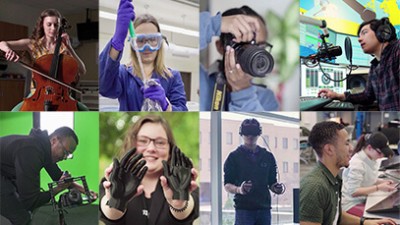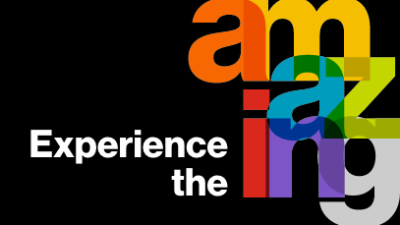News by Topic: Imaging Science
-
January 9, 2023

Staying busy between semesters
During the 15 weeks between spring and fall semester, RIT students are finding ways to embrace new challenges. Some are taking the stage and performing. Others are winning club championships. For many, summer is a time to get work experience and participate in research projects, traveling abroad, and helping others while pursuing their passions.
-
December 8, 2022

New James Webb Space Telescope study outlines ‘the messy death of a multiple star system’
Scientists have reconstructed what they call “the messy death of a multiple star system” using some of the first images from NASA’s James Webb Space Telescope, plus existing data from the European Space Agency’s Gaia observatory. RIT scientists contributed to a Nature Astronomy paper outlining how the Southern Ring Nebula received its unique shape.
-
November 21, 2022

Dozens of RIT researchers included on Stanford University’s list of the world’s top 2% of scientists
Numerous Rochester Institute of Technology faculty, professors emeriti, and postdoctoral researchers were recognized as top-cited scientists in their fields, according to a Stanford University study published by Elsevier.
-
November 18, 2022

RIT Associate Professor Jie Qiao elected Optica fellow
Jie Qiao, an associate professor in RIT’s Chester F. Carlson Center for Imaging Science, was elected to the 2023 Fellow Class of the Optica Society (formerly OSA) by the society’s board of directors.
-
October 21, 2022

World's Oldest Known Map of Stars Found Hiding in Medieval Manuscript
CNET.com mentions work by the Lazarus Project, based at RIT.
-
October 11, 2022

RIT researcher receives Department of Energy grant to develop synthetic aperture radar technology
James Albano, a researcher/engineer at RIT’s Chester F. Carlson Center for Imaging Science, has launched a project funded by the Department of Energy to develop remote sensing technology that could have applications ranging from assessing earthquake damage to determining soil moisture for predicting crop yield.
-
September 30, 2022

RIT students help museums preserve artifacts with studio photography
Spectrum News talks to Assistant Professor Susan Farnand and color science Ph.D. students Olivia Kuzio and Leah Humenuck about their research to help museums and other cultural heritage institutions preserve historically significant artifacts.
-
August 29, 2022

RIT scientists to study molecular makeup of planetary nebulae using radio telescopes
By using radio telescopes to study sun-like stars in their death throes, scientists hope to reveal important information about the origin of life-enabling chemicals in the universe. The NSF is awarding a $339,362 grant to a team led by Professor Joel Kastner to conduct such a study.
-
August 24, 2022

RIT scientists develop spectral imaging techniques to help museums with conservation efforts
Scientists from RIT are turning studio photography technology on its head to help museums and other cultural heritage institutions preserve historically significant artifacts.
-
July 26, 2022

Associate Professor Jie Qiao to develop ultrafast laser material processing in Bordeaux, France
Associate Professor Jie Qiao received a prestigious Fulbright U.S. Scholar Award to advance ultrafast laser material processing technology in the coming academic year. The faculty member from RIT’s Chester F. Carlson Center for Imaging Science will be a visiting professor at the University of Bordeaux.
-
July 18, 2022

$2 million gift establishes two new endowed professorships in RIT’s College of Science
RIT will establish two new endowed professorships in the College of Science thanks to a $2 million donation from Jeffrey Harris ’75 and his partner, Joyce Pratt. RIT matched their donation with $4 million in funding as part of a $20 million challenge to encourage alumni, parents, and friends of the university to support faculty recruitment, retention, and research critical to RIT’s priorities and trajectory.
-
July 12, 2022

Ph.D. student applies imaging science to preventing disasters
Kamal Rana, an imaging science Ph.D. student from India, has been using his skills to help identify landslide triggers and develop models for forecasting landslides.







